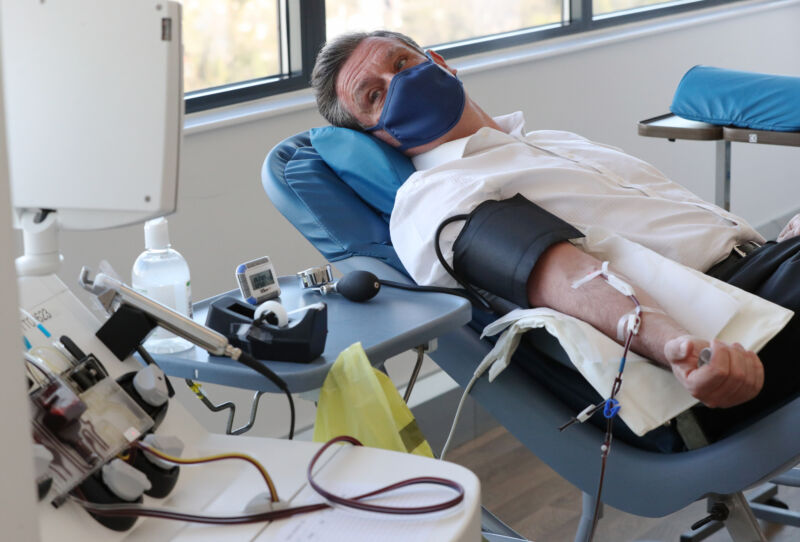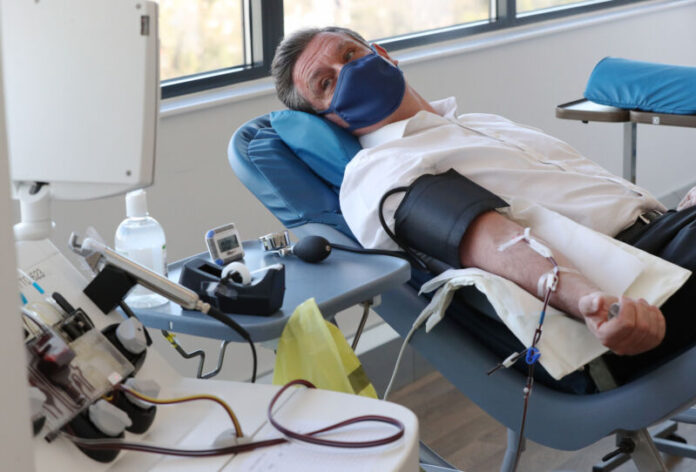
Enlarge / A plasma donor is connected to an apheresis machine, which separates plasma from blood as people donate blood plasma for medicines, at the Twickenham Donor Centre, southwest London on April 7, 2021. (credit: Getty | Johnathan Brady)
The COVID-19 pandemic is considered by many experts to be a mass disabling event. Though most people fully recover from a battle with the highly infectious coronavirus, a significant chunk of patients develop lingering, sometimes debilitating symptoms—aka long COVID. Estimates of how many COVID patients endure long-term symptoms can vary considerably. But the US Centers for Disease Control and Prevention recently estimated that nearly one in five COVID patients report persistent symptoms. With hundreds of millions of COVID-19 cases reported around the globe, even the more modest estimates would still suggest that tens of millions have lasting effects.
Yet, as those patients seek effective care, researchers are still scrambling to define, understand, and treat this new phenomenon. Many patients have reported uphill battles for finding care and relief, including long waits at clinics and few treatment options when they see a care provider.
Cue the quacks. This situation is ripe for unscrupulous actors to step in and begin offering unproven products and treatments—likely at exorbitant prices. It's a tried-and-true model: When modern medicine is not yet able to provide evidence-based treatment, quacks slither in to console the desperate, untreated patients. Amid their sympathetic platitudes, they rebuke modern medicine, scowl at callous physicians, and scoff at the slow pace and high price of clinical trials. With any ill-gotten trust they earn, these bad actors can peddle unproven treatments and false hope.
Read 11 remaining paragraphs | Comments
Ars TechnicaContinue reading/original-link]




